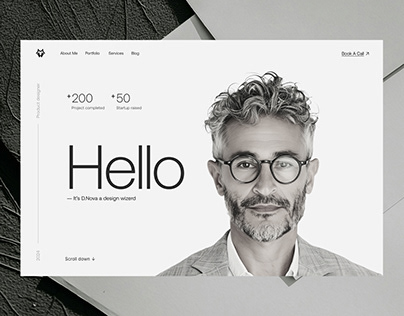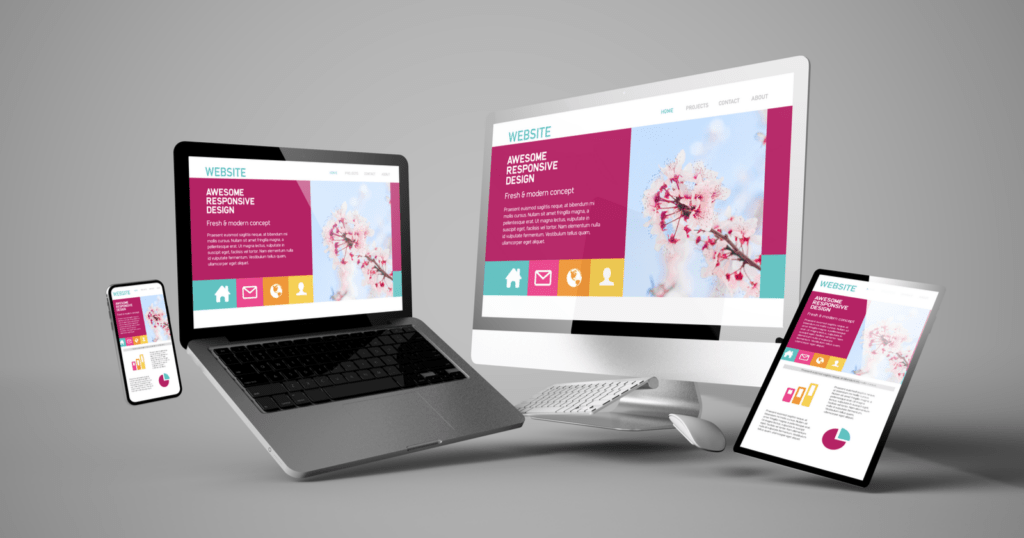End-to-End Website Design Solutions from Planning to Launch
End-to-End Website Design Solutions from Planning to Launch
Blog Article
Leading Tips for Creating an Impactful Website Style That Converts
In today's digital landscape, the value of an impactful site layout can not be overstated, especially when it comes to transforming visitors right into customers. To achieve this, one need to consider a variety of variables, including understanding the target audience, focusing on individual experience, and enhancing for mobile platforms. The critical use of engaging call-to-actions and a well-defined aesthetic power structure plays an essential role in guiding individuals through their trip. As we explore these necessary aspects, it becomes obvious that the success of your web site rests on greater than just appearance; it requires a thoughtful method to design and functionality.

Understand Your Target Audience
Comprehending your target market is essential to effective website style, as it lays the foundation for creating an engaging user experience. Identifying who your users are, including their demographics, choices, and habits, makes it possible for developers to tailor the website's web content, format, and functionality to satisfy particular needs.
Conducting comprehensive market research is crucial in this procedure. Studies, meetings, and analytics can provide valuable understandings into individual expectations and pain factors. By compiling this information, developers can develop user identities that represent various sectors of the audience, making sure that style decisions are informed and relevant.
Furthermore, understanding the target market helps in selecting proper layout components such as color pattern, typography, and images that reverberate with users. A website that speaks straight to its target market fosters a sense of connection and count on, motivating longer sees and greater conversion rates.
Eventually, a user-centered strategy to web site style not only boosts individual contentment yet likewise sustains organization objectives by driving interaction and commitment. By prioritizing the requirements and preferences of the target market, a site can effectively serve its function and attain desired end results.
Prioritize Customer Experience
To enhance the general efficiency of a website, prioritizing individual experience (UX) is essential (Website Design). A properly designed UX makes sure that site visitors can browse the site effortlessly, find info swiftly, and engage with material meaningfully. This brings about increased customer complete satisfaction and greater conversion prices
Begin by carrying out instinctive navigation. Menus needs to be logically structured, enabling users to locate crucial areas of the site with minimal initiative. Uniformity in design elements, such as shade plans and font styles, promotes experience, which is vital for maintaining customer engagement.
Furthermore, consider the packing rate of your internet site. A hold-up of just a few seconds can cause significant drop-offs, as individuals are less likely to wait on a slow-loading page. Improving photos and maximizing code can boost performance and maintain site visitors.
In addition, quality in material presentation is important. Usage succinct, engaging language and damage up text with visuals to boost readability. By prioritizing customer experience, you not just develop a much more pleasurable setting for site visitors but likewise strengthen your brand's reputation. Eventually, a concentrate on UX is a financial investment in the long-lasting success of your website.
Optimize for Mobile Tools
Enhancing for smart phones is crucial in today's electronic landscape, where an increasing number of individuals gain access to sites with smart devices and tablets. A mobile-friendly layout not only boosts user experience however likewise plays a substantial role in boosting online search engine positions. To achieve this, it is important to take on a receptive style that automatically gets used to various display sizes and positionings.

Packing speed is one more essential element; mobile customers are typically much less client and expect rapid access to details. Maximize pictures and leverage browser caching to improve efficiency. Test your web site on multiple tools and display resolutions to recognize and fix any type of prospective functionality issues. By prioritizing mobile optimization, you make sure that your web site continues to be affordable and effectively involves a broader audience.
Usage Engaging Call-to-Actions
An internet site's performance frequently depends upon its capability to lead visitors towards desired actions, making compelling call-to-actions (CTAs) necessary parts of style. CTAs work as the essential points that guide customers to involve with the site, whether that indicates purchasing, authorizing up for an e-newsletter, or downloading a resource.
To produce effective CTAs, clearness is vital. Use concise language that plainly communicates the action you want the individual to take. Phrases such as "Get Begun," "Register Free," or "Shop Now" not just share necessity yet additionally remove obscurity. The positioning of CTAs is similarly essential; they must be strategically positioned throughout the page to ensure they are quickly visible, especially in high-traffic areas.
Additionally, consider making use of directional cues, such as arrowheads or pictures, to assist customers toward these buttons. By concentrating on these aspects, businesses can considerably enhance user interaction, driving conversions and inevitably attaining their site's goals.
Emphasis on Visual Power Structure
Efficient website design counts heavily click here for more info on a well-structured aesthetic power structure that guides users through content effortlessly. By organizing elements in a manner that focuses on details, designers can boost individual experience and facilitate decision-making. This entails utilizing size, shade, comparison, and spacing strategically to accentuate the most crucial parts of a web page.
The usage of larger typefaces for headings and subheadings establishes a clear distinction in between various sections, permitting individuals to scan material effortlessly. Additionally, employing contrasting shades for buttons and calls-to-action can catch customer focus and encourage interaction. Whitespace is an additional important part; it protects against clutter and allows customers to concentrate on vital messages without disturbances.
Images and graphics ought to complement the text while additionally sticking to the well-known pecking order, strengthening the overall message (Website Design). Consistency in layout aspects, such as color pattern and typography, more reinforces the visual pecking order, making navigation intuitive

Verdict
In final thought, reliable web site design necessitates a detailed understanding of the target audience, prioritization of user experience, and mobile optimization. Eventually, a well-executed website layout offers as a crucial part in driving user activities and achieving business goals.
Report this page